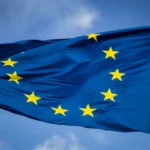The ability to seamlessly share and trust information is the key to a new era of safe, secure travel.
By Heather Dahl
Technology transformations start slowly and then seem to go so fast that they rapidly become just how things are done almost without noticing. When friction dissipates, we rapidly cross into a new normal. This is the case with decentralized identity. For years, people talked about what could be done with the technology, now companies are implementing it to drive digital transformation, with air travel leading the way.
Over the coming weeks, our partner SITA — the world’s leading specialist in air transport communications and information technology — will explain how decentralized identity is driving this transformation in digital travel, from border crossing to passenger loyalty programs to baggage and beyond.
Here, I’d like to give a brief overview of the technology. Most people have no idea what decentralized identity means let alone what it can do and why it will transform how we share data, prove our identities, enable privacy, do business, and — of course — travel.
Much like our physical landscape of roads, rail lines and rivers, we connect, digitally, through an infrastructure of APIs, databases, emails, SMS, and webpages. To share information, we need a way to travel from one point to another and an identity, like a passport, to prove who we are when we get there.
But our digital journeys are filled with friction and danger. Digital identity is easily faked, passwords are guessed, access credentials are stolen, databases are plundered, connections between disparate systems are complex and costly to create, you can’t be sure that information hasn’t been altered, and you don’t know who is tracking you or what they’re doing with your information. Security solutions like multifactor authentication and privacy solutions like GDPR just add more complexity, cost, and friction — and they don’t actually solve the underlying problems.
Our current system relies on checking in with a source to establish proof of identity or the veracity of data. You have multiple digital identities held as accounts accessed and verified by logins and passwords: multiple accounts for airlines, booking sites, hotels, event ticketing — in addition to employment, school, social services, utilities, ecommerce, and social media. The assumption is that when you need to use these services, you can prove you created your account. Sometimes, you can use one account for several services (as in social media logins), but all these accounts store personal data about you, making identity theft and fraud a constant risk and making data tracking a challenging privacy issue.
What if we could declutter this mess without having to rip it up and start over? What if we could take our digital landscape of roads and borders and identities and streamline it so that we can go from anywhere to anywhere — any system to any system — and prove that we are who we say we are and that the data we present hasn’t been altered?
This is what decentralized identity does.
Decentralized identity uses decentralized identifiers — a new global standard for identity — cryptography, and verifiable digital credentials to prove that you and only you are at one end of a secure communication and that the person or organization or device at the other end — your airline, bank, hotel, — can only be who they claim to be. A verifiable credential is like a digital container that can seal any kind of digital information. You always know the source of the container. You can’t alter the contents of the container without breaking the seal. If you trust the source of the container, you can trust the contents.
In practice, this means no more logins, passwords, third-party identity providers, multifactor authentication, or direct integrations. It means we can hold and share our data in a secure, consent-based way to anyone or any system with the software to verify it. It means our mobile devices can have the functionality of APIs but with a significantly better security profile.
Removing the key sources of data insecurity and identity fraud — centralized databases, user accounts and passwords— makes it a game changer. But there’s a bigger picture: The more easily information can be shared and the more it can be trusted, the faster and more efficient market decisions can be. This decluttering is a significant cost and time saver. Once information is issued in a verifiable format, it can be confidently reused over and over again.
At a certain point in this digital transformation, the combination of decreased friction and increased speed and scale will spark innovation. Think about how the telegraph went in a few decades from wiring messages over a few miles to enabling rail networks, expanding markets, and to wiring money.
This is the rapidly changing landscape we’re seeing as decentralized identity accelerates. Companies like SITA see how a digital identity that can be trusted by governments everywhere can be used in myriad ways to simplify operations for airlines, airports, and passengers. As the technology can be easily integrated with any existing system, there’s no need for costly infrastructure upgrades. And, because data authentication, sharing, and consent is now technically easy, airlines and airports can integrate new partners to provide new services to passengers.
Because the technology frees airlines and airports from having to store and manage huge amounts of passenger personal data, it also makes compliance with emerging data protection and privacy policies like eIDAS, GDPR, CCPA, vastly simpler: companies don’t have to hold people’s personal data for verification. There is a genuine mechanism for people to consent to share their data.
We also see decentralized identity as essential to the successful deployment of AI (combating deepfakes) and, in the longer term, something that will have just as much, if not more, impact. This is because the ability to instantly and seamlessly trust identity and data simplifies markets and allows for much more complex interactions at minimal cost. Whenever, in history, people can trust each other to share information that can be trusted, we see rapid innovation and increasing prosperity.
In an age of fragmentation, mistrust, fraud, and friction, decentralized identity is both the solution we knew we urgently needed and the path to opportunities. Some of those opportunities are quickly coming into view: seamless digital travel will reshape the air travel, the tourist sector, and passenger experience, as SITA will explain.
But behind the absence of friction, the simplicity of authentication, the capacity to consent, and the respect for privacy, there’s a transformation in the way our data and our identities move, connect, and interact across digital infrastructure. That’s the hidden travel story, and it will change everything.
For those who want to read more about the technology, read our “Beginner’s Guide to Decentralized Identity”.
####






